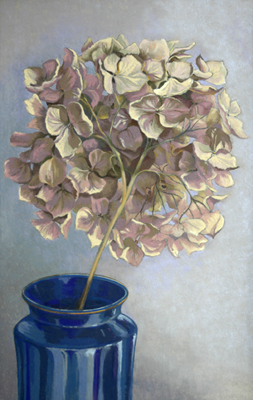

![]()
![]()
Welcome
to Glenda Yates Krusberg's galleries.
Hope you enjoy the paintings as much as I did creating them!
If you are interested in purchasing any piece, click on Contact for
more info.
Exploring
Acrylics
Going
from pastel, one of the oldest mediums, to acrylics, the medium of the
modern age, has been a learning curve. Remembering the original acrylics,
I was sceptical. They were "plastic", gaudy and best for applying
with a roller in a hard-edge approach. Today's acrylics offer endless
possibilities; they can be used for their transparent qualities or used
opaquely as oil paints. Acrylics can been applied to numerous grounds,
the colours are amazing and the bonuses are that they dry quickly, have
very little odour and clean-up is simple.
Short
History of Pastels
Soft
Pastels are pure pigments (95% pigment and very UV resistant) held together
with a binder of gum tragacanth. When framed with acid-free matte and
U/V glass, pieces will last indefinitely without fading (200 years plus
or longer than we can imagine).
Pioneer
Woman
Rosalba Carriera
(1674-1757)
Venetian: one of few women to have achieved fame in the visual arts before
the nineteenth century. She
produced silk-smooth pastel portraits of lords and ladies of the court
of Louis XV in France.
Pioneer
Quentin de
la Tour (1704-1788)
Under Carriera’s influence he became one of the most sought after
pastel portraitists of his day. The accomplished ease and rapidity with
which he handled what he called his “coloured dust” helped
him to capture a spontaneous expression of his sitters’ personalities.“Unknown
to them”, he said, “I descend into the depths of my sitters
and bring back the whole man.”
Pioneer
Edgar Degas (1824-1898)
Pastel genius, experimentalist, father of modern pastel painting. Degas
developed the pastel medium far beyond the traditional formulae of the
18th century masters. He experimented with an incredible variety of strokes
to render form, light and texture. He often built up densely textured
layers of colours combining pastel, gouache, tempera and oil paints diluted
with turpentine. Thanks to Degas, pastel in the 21st century is appreciated
for its versatility and its powers of expression.
Modern pastel artists enjoy the “sculptural” qualities of pastel and its ability to be both a painting and a drawing medium, emphasizing its linearity and texture as well as its powdery insubstantiality.
From: The Beginners Guide Pastels: Angela Gair 1997
Acrylics
![]() Pastels
Pastels![]() Bio
Bio![]() Shows
Shows ![]() Contact
Contact![]() Home
Home
Glenda's Web Page Design: Linda Tait, © MacKenzie Krusberg Design Associates Ltd.


